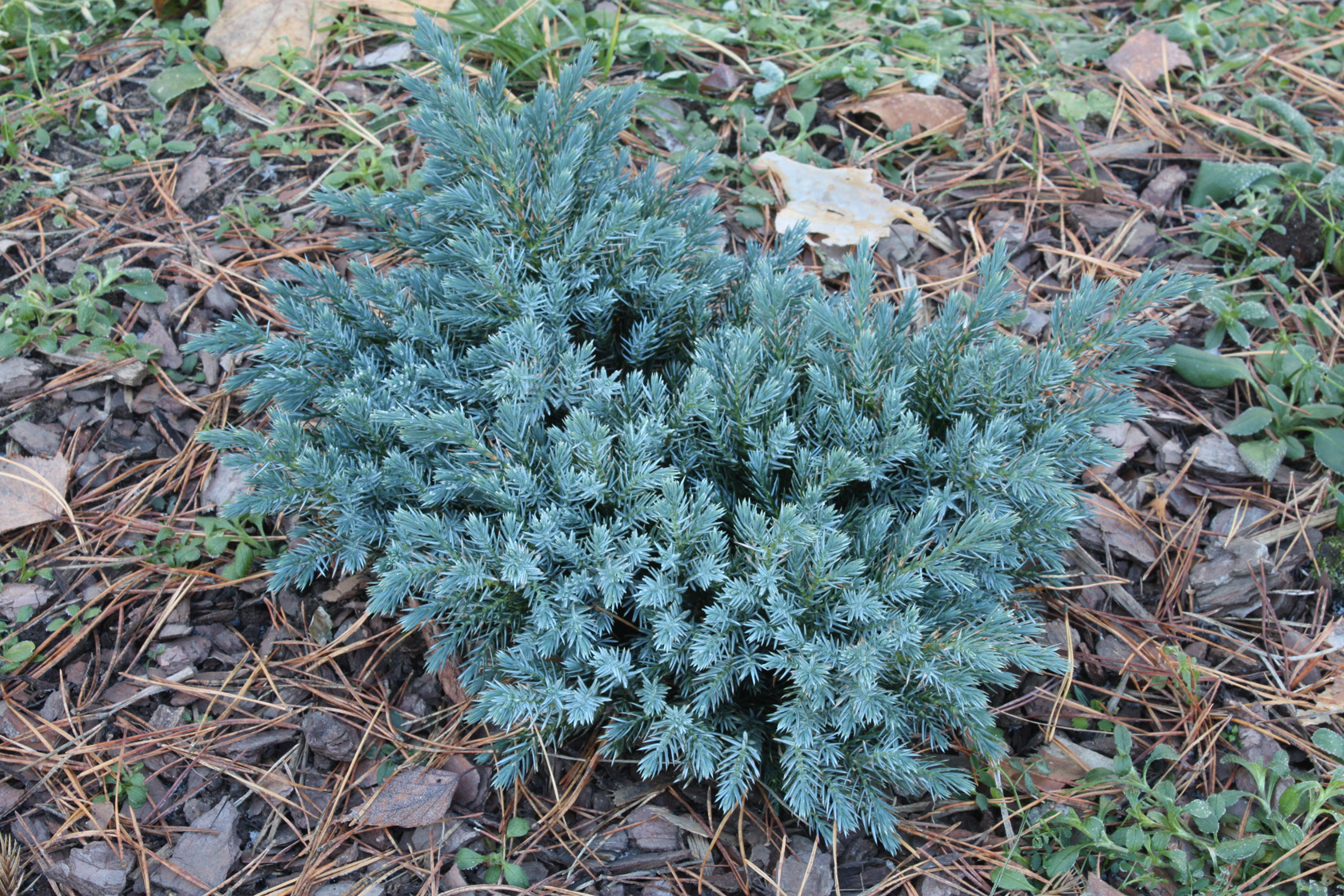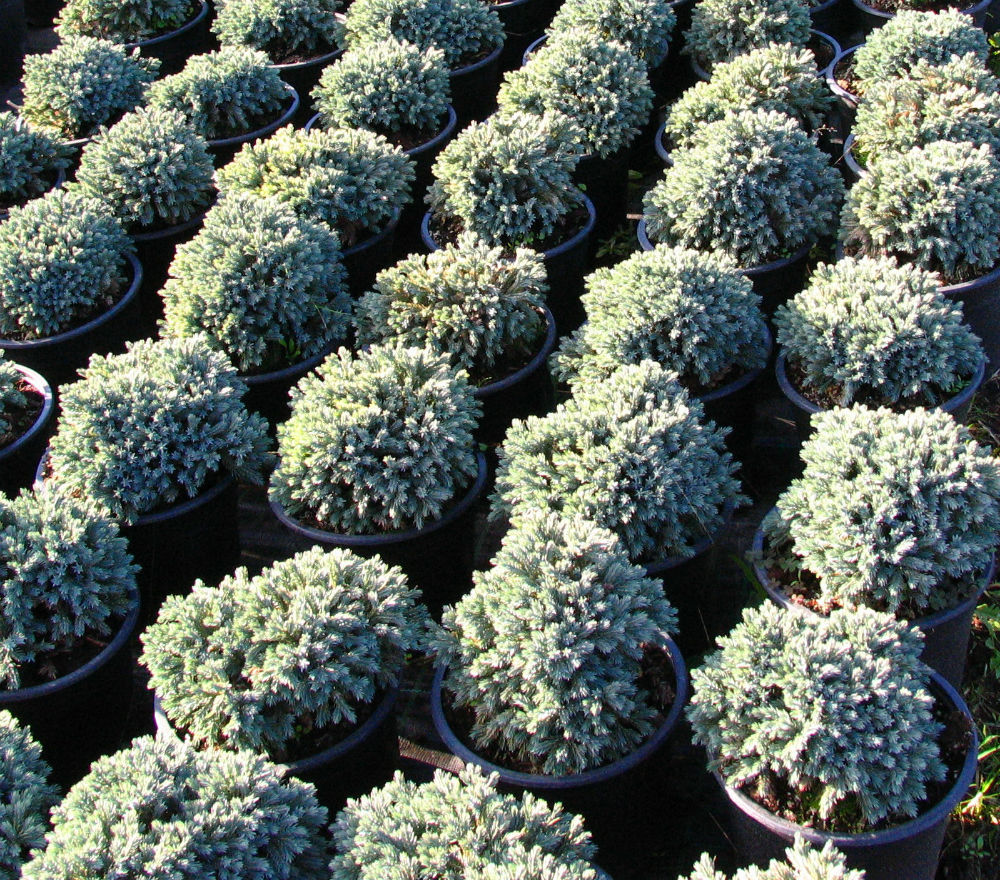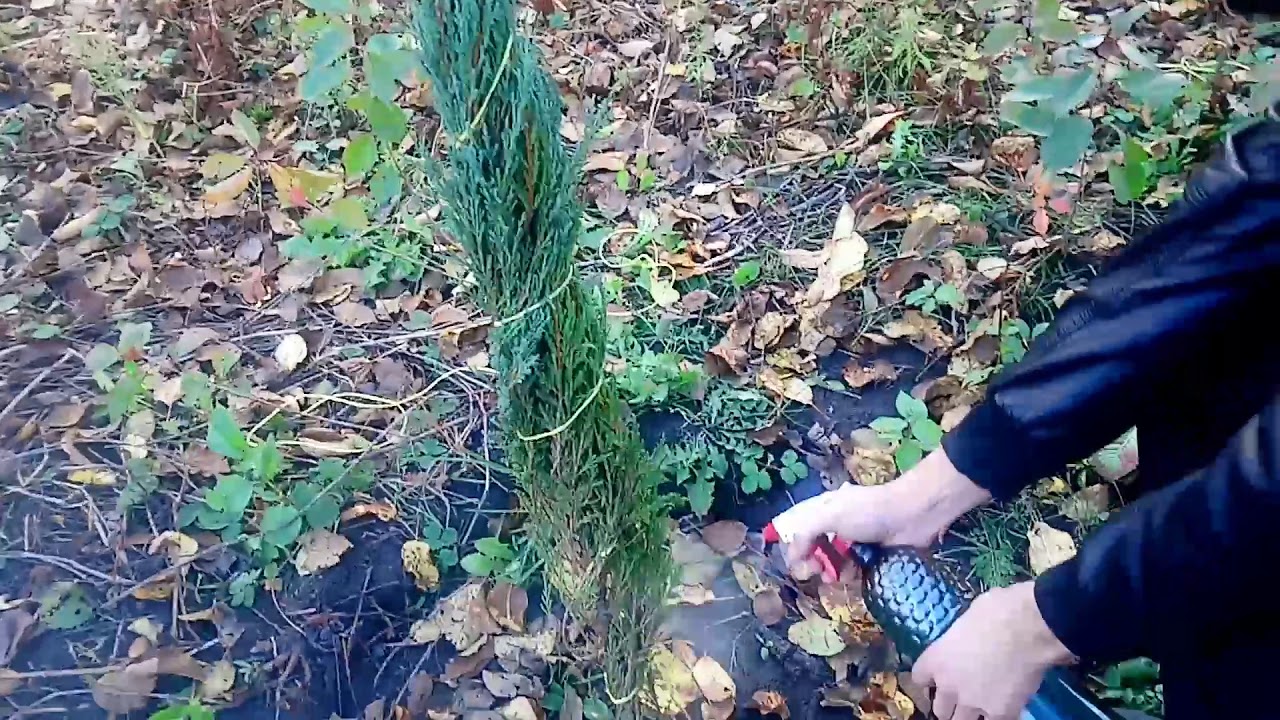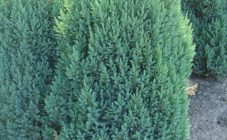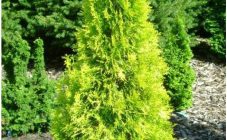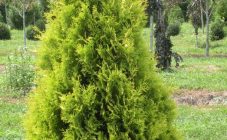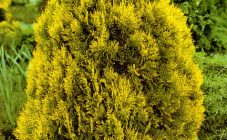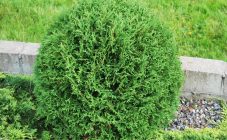Content:
The Blue Star juniper is a popular coniferous shrub. The compact variety got its name from the structure and color of the needles, which look like blue stars. An evergreen dwarf shrub is grown in gardens, squares, flower beds, flower beds.
Juniper Blue Star: description
The plant is a slow growing compact bush. The annual growth of shoots is 5-8 cm. The height of an adult specimen is 0.7-1 m. The diameter is 1.5-2 m. A 10-year-old juniper has a height of 30-40 cm, a width of 50 cm.
The crown is dense, domed, branches are spreading. The needles are silver-blue, short (0.5-1 cm), scaly, acicular, prickly. In the summer, the juniper has a turquoise color, and in the fall and winter it turns purple, lilac.
Fruits are cone-shaped dark blue berries, almost black, 5 mm in size. Fruiting occurs in the fall, a year after the bushes were planted.
Characteristic
Juniper scaly Blue Star prefers a sunny, open, well-ventilated area. Slight partial shade is allowed. In the shade, the bushes develop poorly, their coloring becomes dull.
The plant is considered undemanding to soils, but it is better to choose nutritious, loose, slightly acidic or neutral, drained (but not swampy, water should not stagnate) lands for it.
The culture is highly frost-resistant (withstands temperatures of -25 degrees), tolerates a dry climate well. She winters well under the snow. It is grown in the middle lane, the Moscow region, the northern regions of Russia.
Juniper Blue Star: planting and care
Juniper Blue Star is a fairly unpretentious garden culture, it is not difficult to care for it.
Training
It is necessary to prepare the potting mix for the plant:
- sod land (1 part);
- sand (1 part);
- peat (2 parts).
Add humus or clay, if stony, sandy ground. Clay soil is diluted with sand, peat. A comfortable acidity level (pH) is 4.5-6.5.
Blue scaly juniper is planted in the second half of April - the end of May, in the summer in the last days of August, in the fall (September - October). Spring is preferable.
The minimum space between seedlings is 0.5 m, but it is best to plant the bushes at a distance of 2 m from each other.
Landing
Algorithm of actions:
- A pit is dug with a depth of 70 cm and a width of 2-3 times the lump of earth. Broken brick, gravel, coarse sand (thickness - 20 cm) are poured at the bottom of the pit.
- Transfer the young plant from the container to the hole. Filled with prepared soil, tamped, watered.
- The trunk circle is mulched with dry grass, needles, wood chips, peat, pine bark, sawdust.
Care
The first week after the juniper is planted, water it abundantly every day. Then watering is reduced - 1-2 times every 7-14 days is enough.Each adult bush needs 10-30 liters of water (depending on the soil). Sprinkling or spraying is carried out in the evening, especially in dry summers.
Weeds are regularly weeded, shallowly loosen the ground around the bushes. Mulch the soil with small stone or gravel (layer - 6-8 cm).
In the spring (end of March - May 10) the plant is fed for the first time. Use complex, mineral fertilizers or nitroammofosk. Then watered well. The second feeding is done in October.
Sanitary pruning is carried out in autumn. Sick, damaged, dry, improperly growing branches are removed.
In areas with cold climates, you should cover the juniper for the winter. In autumn (October), the branches are pressed to the trunk with a ribbon or soft rope, the bushes are sprinkled with peat with a layer of 10 cm and the young seedlings are covered with spruce branches. In the spring, this will save the ephedra from the scalding rays of the sun.
Reproduction
All varieties of conifers are dioecious plants. They reproduce by seed, vegetatively. The first option is rather complicated and is used mainly by breeders.
How to propagate:
- Cutting is quite accessible to the ordinary gardener. Bushes 8-10 years old are used. In mid-May, young (1 year old) stalks of 10 cm are cut. They should be with pieces of wood (heels).
- The lower tips of the cuttings are cleaned from the needles. They are immersed for 24 hours in a stimulating solution ("Kornevin", "Epin", "Zircon").
- The branches are buried in a wet mixture of sand and peat (1: 1). Cover with a film or a half of a plastic bottle. Comfortable temperature - + 15-20 degrees.
- After 1-1.5 months, roots are formed. When they get stronger, the sprout is planted in open ground. They grow it for three years (you can at home on a sunny windowsill). Then they are deposited in a permanent place.
Diseases, pests
For the prevention of diseases, juniper is treated with Bordeaux liquid (1%).
Diseases and pests affecting Blue Star:
- Rust. The reason is considered to be animals that grease the ground. The needles acquire a reddish color, and the twigs dry out completely. Also, the plant can be affected by insufficiently good ecology or excessive moisture. All affected parts of the plant are removed, a bush is planted, the juniper is treated three times every 10 days with Arcerid (50 g per 10 l of water).
- Biotorella cancer. Fungal disease is characterized by the formation of brown spots on the bark, then ulcers appear, the needles fall off. Bushes are cut, sprayed with copper sulfate.
- Schütte. The needles become dark yellow, dry out, and remain on the branches for a long time. Use "HOM".
- Miner moth. The plant is treated with Decis.
- Aphid. Fitoferm is used.
- Shield. Sprayed with Karbofos.
- Spider mite. Sprinkle with Karate preparation.
Landscape design
The Blue Star juniper is widely used to decorate parks, private plots, rocky gardens, alpine slides, terraces, balconies, living quarters. Bushes are placed near reservoirs, and they also make a hedge out of them.
The plant goes well with roses. Lavender, begonia, marigolds, chrysanthemums are planted next to it.
Blue Star ephedra is quite simple to grow. The main thing is to follow all recommendations on agricultural technology.
